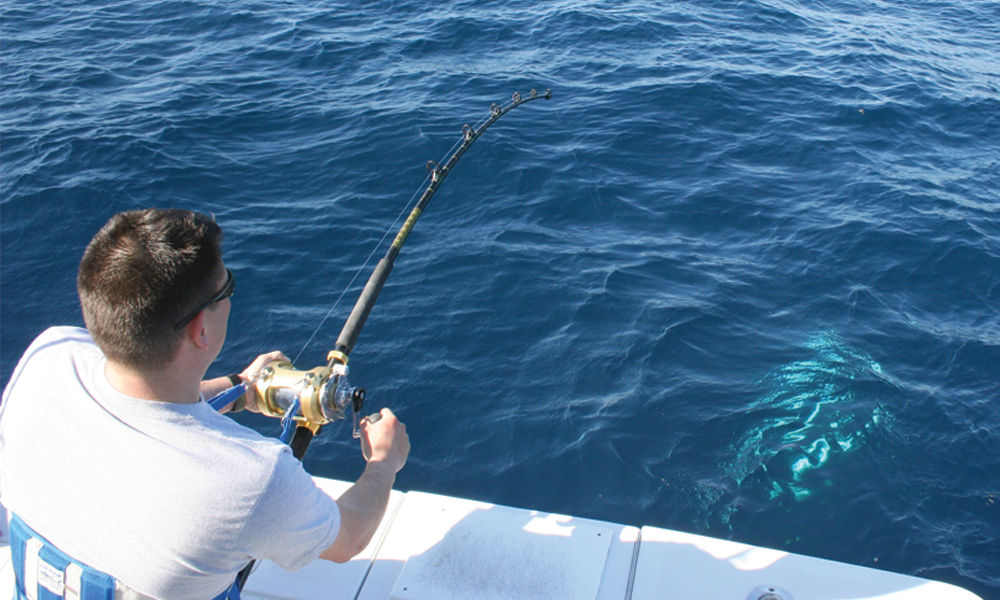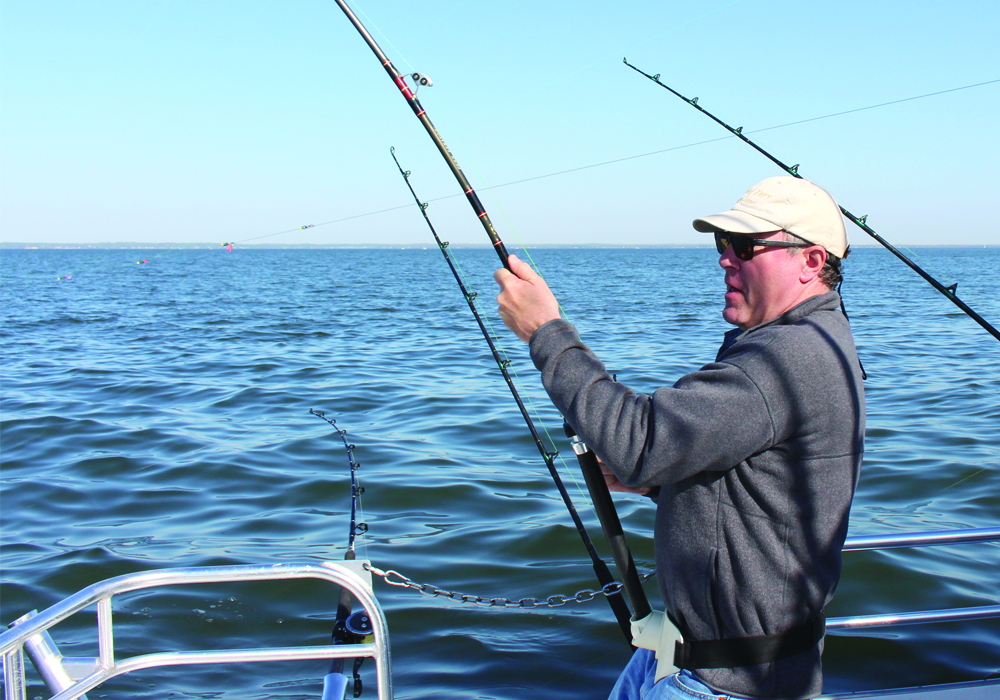A new biggest-ever, world record, ho-lee-cow fish of a lifetime is on the end of your line. You know to keep your rod bent and maintain tension on the line. You understand that high-sticking is bad. You won’t let that fish rest. But when the adrenaline is pumping and the drag is screaming, it’s nearly impossible to play it cool and do everything right. Even if you do perform perfectly you might still lose the fish, but at least you won’t lie awake at night replaying the scene over and over again in your head, thinking “how could I have done that…?”
Unfortunately, there are a number of less common fishing mistakes people make on a regular basis, which might work out just fine when you have an average fish on the line but are the kiss of death with a trophy fish. The next time you hook up with a monster, make sure you don’t commit one of these five common blunders which are practically guaranteed to lose you the fish of a lifetime.

The reach-and-reel.
Let’s say you’re battling a behemoth on stand-up gear. You’ve been at it for half an hour or more, so you’re glad to be strapped into a belt and harness. This allows you to use your entire body to work the rod so your left (support) arm is fine. But at this point your right (cranking) arm is getting tired. Over and over again you crank, crank, and crank some more, and then that darn fish zips back out all the line you spent the last few minutes gaining. Whew – you need a break. But you know you can’t stop turning that handle, or slack may get into the line. So you lean back in the harness a bit to support the rod, and reach across the rod and reel with your left hand. You think that this way, you’ll be able to crank two-handed.
Suddenly everything goes slack. Dang it, the hook must have pulled! No, wait a sec, now there’s a huge backlash in the reel. How the heck did that happen?! Now there’s tension on the line again and the backlash is a bird’s nest and – snap! – it’s game over.
What happened? All conventional big game reels have either a lever drag or a clutch lever on the top right side of the reel. When people reach across the reel and attempt to turn the crank using their left hand, or both hands at once, invariably, the left wrist hits this lever on the down-stroke. The reel suddenly goes into freespool while there’s tension on the line, and a bird’s nest results.
You are not a machine.
Halfway through a fight with a new world-record rockfish, you decide that the drag is too loose. Instead of adjusting it as you fight the fish, you apply a little extra pressure with your thumb on the spool. You don’t think you’re applying too much pressure, but the line snaps and the fish goes free.
This mistake is so common it should be obvious to any experienced angler. Yet many of us still do it with regularity (including myself, I must admit). But we have to remind ourselves that our thumbs simply aren’t as smooth as the drags in our precision-machined reels. (Assuming you’re using a high-quality reel). Even if you aren’t applying too much pressure, it’s bound to be uneven pressure. Now think about coming to a stop in a car; apply the brakes evenly and it’s a smooth event. Apply them abruptly, and there’s a much better chance of the tires breaking free. That’s your line snapping.
I can’t even count how many times I’ve seen guys thumb a spool, and break off a fish. Play it smart, take your time, and adjust the drag properly. Note: scale-setting the drags ahead of time, and telling other anglers using the gear not to change the settings, is also key if you plan to push your gear and your fish-fighting abilities to the limit.
Rod physics, 101.
Your arms are shaking, sweat is stinging your eyes, and every time you pump the rod it feels like your arms are about to give out. This fish is kicking your butt, and you need a break. So you allow your rod to drop to the gunwale and allow it to... Crack! Your rod inexplicably shatters, the moment it touches the side of the boat. What happened?
Modern graphite fishing rods are made to bend in an arc. Eliminate the rod’s ability to bend in any one section, and it’ll break. Even some fiberglass rods will break when the top half is bending, but the bottom half suddenly can’t. Rest a rod against a gunwale, and now only a portion of the parabola is able to function – and once a rod snaps, your chances of conquering a monster fish drop into the basement.
Get it wet.
You have that record-breaker up close to the boat. There it is – you can see it, the biggest of its species that you’ve ever laid eyes on, almost within netting range. But in a last desperate attempt to run for freedom the fish surges and heads under the boat. You stretch the tip as far out to the side as possible, but the line still touches the hull bottom. The fish gives a shake of its head, the line chafs, and, well, you know the end of this story.
Instead of leaning out and holding the rod tip away from the boat, the correct move is to lean over and shove the rod tip into the water as deep as possible. Get the tip lower in the water than the bottom of the boat, and the line won’t rub up against it. Inexperienced anglers are often guilty of this move even when you’re yelling “shove the rod into the water,” into their ear. As a dedicated angler you may already understand this. But remember that guests and newbies on your boat usually won’t. So when a big fish is on the line and it suddenly dives under the boat, you need to advise them. Emphatically.

Short and sweet.
You’re hooked up to a nice one, and need to pump the rod to gain line. Desperate to bring the fish closer to the boat, you lift the rod tip to 11 o’clock – you know not to “high-stick” by bringing the tip any higher, or it may snap – then reel like crazy as you drop it back down. As you drop the tip you spin the crank on the reel as fast as your hand can go, gaining a lot of line as the pressure comes off the rod. Then, you realize the pressure is gone completely – you’re reeling up an empty hook. What happened?
Whenever you’re pumping a rod, short multiple strokes are always much better then fewer, longer strokes. Pumping from nine to 10 o’clock is much safer than pumping from eight to 11 o’clock. They allow you to maintain tension and gain line while always keeping a reserve of potential motion for the tip, so you can raise it if need be to keep the full bend in the rod. That’s a must; any time you start gaining a lot of line because the bend is coming out of the rod there should be alarm bells going off. Either the fish is charging the boat or you’re not cranking quickly enough to maintain full tension as the rod tip drops. Either way, this is bad news.
Always remember: when Bubba is on the line, one false move will probably be your last one. And if you want to put that new world record on ice, you’ll have to make sure you don’t fall victim to any of these five mistakes.
- By Lenny Rudow